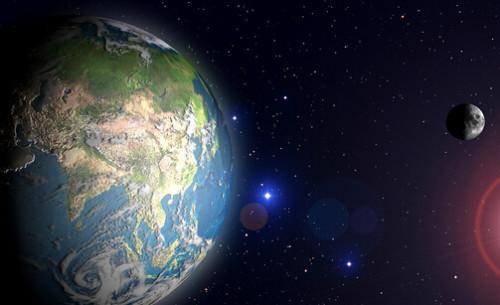It was equally dismissive of convection and seafloor spreading. And in Basin and Range, published in 1980, John McPhee noted that even then one American geologist in eight still didn't believe in plate tectonics.
它同樣不承認對流理論和海床擴展理論。在1980年出版的《海洋與山脈》一書中,約翰·麥克菲指出,即使到了那個時候,每8名美國地質學家中仍有1名不相信板塊構造學說。
Today we know that Earth's surface is made up of eight to twelve big plates (depending on how you define big) and twenty or so smaller ones, and they all move in different directions and at different speeds. Some plates are large and comparatively inactive, others small but energetic. They bear only an incidental relationship to the landmasses that sit upon them.
今天,我們知道,地球表面是由8─12個大的板塊(取決于你怎么界定大小)組成的;它們都在以不同的速度朝不同的方向移動。有的板塊很大,不大活躍;有的很小,但能量很大。它們與所在陸塊只有一種附帶關系。

The North American plate, for instance, is much larger than the continent with which it is associated. It roughly traces the outline of the continent's western coast (which is why that area is so seismically active, because of the bump and crush of the plate boundary), but ignores the eastern seaboard altogether and instead extends halfway across the Atlantic to the mid-ocean ridge. Iceland is split down the middle, which makes it tectonically half American and half European. New Zealand, meanwhile, is part of the immense Indian Ocean plate even though it is nowhere near the Indian Ocean. And so it goes for most plates.
比如,北美板塊比跟它有關的大陸要大得多。它大致沿著該大陸的西海岸伸展(由于板塊邊界上的磕磕碰碰,因此那個地區經常發生地震),但與東海岸完全沒有關系,而是越過大西洋的一半路程,抵達大西洋中部的山脊。冰島從中間一分為二,在板塊上一半屬于美洲,一半屬于歐洲。與此同時,新西蘭是巨大的印度洋板塊的組成部分,雖然這個國家遠離印度洋。大多數板塊都是這種情況。
The connections between modern landmasses and those of the past were found to be infinitely more complex than anyone had imagined. Kazakhstan, it turns out, was once attached to Norway and New England. One corner of Staten Island, but only a corner, is European. So is part of Newfoundland.
人們發現,現代陸塊和古代陸塊之間的關系,比想像的要復雜得多。哈薩克斯坦原來一度與挪威和新英格蘭相連。斯塔騰島的一角,僅僅是一角,屬于歐洲。部分紐芬蘭也是。












